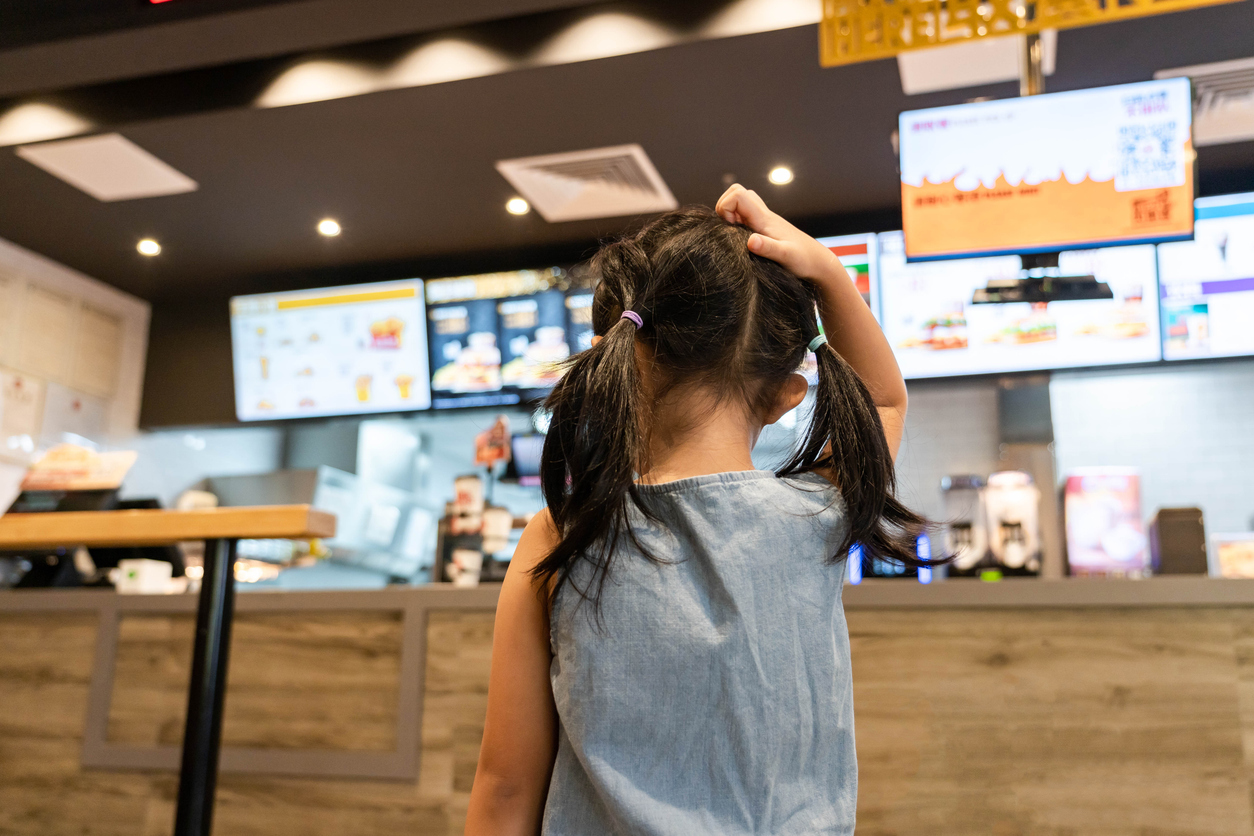Discover how QSR technology is changing the fast-food restaurant industry. Explore the latest innovations in POS systems and digital ordering.
Quick Service Restaurants (QSRs) leverage technology to stay competitive, digital sales, and meet evolving customer expectations. Technology plays a critical role in streamlining operations, enhancing customer experiences, and driving business growth. From custom first-party ordering to kiosks to drive-thru AI ordering, technology is reshaping how QSRs operate and serve their customers. Let’s explore the must-have features QSR brands need and the advanced solutions transforming the industry.
Must-Have Technology For QSR Brands
Technology is a cornerstone of modern Quick Service Restaurants, offering solutions that improve efficiency and customer satisfaction. Here are some essential technology that QSRs should consider:
Point Of Sale (POS) Systems
A Point of Sale (POS) system is a crucial tool for any QSR. It's more than just a cash register—it’s the heart of a restaurant’s operations. Modern POS systems offer real-time sales tracking, inventory management, and detailed reporting capabilities. These features allow QSRs to monitor sales trends, manage stock levels efficiently, and make data-driven decisions that improve operational efficiency and accuracy.
Integrated Payment Solutions
Integrated payment solutions are another essential feature for QSRs. They offer multi-payment acceptance, including credit cards, mobile payments, and secure payment gateways. These features ensure that transactions are processed smoothly and securely, catering to customer preferences and enhancing payment security. By embracing these advanced payment solutions, QSRs can provide a seamless checkout experience and protect sensitive financial information.
Online Ordering Systems
With the rise of digital dining, online ordering systems have become crucial for QSRs. These systems provide user-friendly interfaces, real-time order tracking, and integration with delivery services. They streamline the ordering process, making it easier for customers to place orders and for restaurants to manage them. The convenience of online ordering is a significant driver of customer satisfaction in the digital age.
Loyalty Programs
Loyalty programs are essential for retaining customers and encouraging repeat business. These programs often include points-based rewards, tiered membership levels, and personalized offers. By creating customized experiences and providing incentives for repeat visits, loyalty programs help build a strong customer base.
Marketing Tools
Effective marketing tools are vital for promoting QSRs and engaging customers. These tools include targeted promotions, social media integration, and analytics. These features allow QSRs to create impactful marketing campaigns, track their success, and adjust strategies based on real-time data. Restaurant marketing helps drive customer engagement and increase brand visibility.
Technology Stacks Commonly Used In QSRs
Several technology stacks are transforming the QSR industry, each offering unique benefits:
Voice Of Customer Analytics
Voice of Customer (VoC) Analytics is a powerful tool for understanding customer feedback and behavior. It involves gathering and analyzing customer input to improve satisfaction, tailor marketing strategies, and enhance product offerings. QSRs integrate VoC Analytics with existing systems to gain actionable insights and make informed decisions.
Automation Tools
Automation tools are crucial for streamlining operations within QSRs. These tools include kitchen display systems, inventory management solutions, and staff scheduling software. Automation increases efficiency, reduces labor costs, and minimizes human error, allowing staff to focus on high-value tasks.
AI-Driven Menus
AI-Driven Menus use artificial intelligence to transform menu design and personalization. These systems analyze customer preferences and sales data to offer tailored menu recommendations and optimize layout for better sales. AI-driven menus enhance the dining experience by presenting customers with relevant options based on their history and preferences.
Cloud-Based POS Systems
Cloud-based POS Systems are increasingly important in the QSR industry. They offer real-time data access, scalability, and remote management capabilities. Cloud-based POS systems integrate seamlessly with other tech stacks, providing mobile compatibility and advanced reporting tools.
Advanced Solutions For Enhancing QSR Operations
Technological advancements are significantly improving QSR operations. Here are some innovative solutions:
Self-Ordering Kiosks
Self-ordering kiosks streamline the ordering process by allowing customers to place orders independently. These kiosks reduce wait times, minimize miscommunication, and suggest additional items and promotions. By automating the ordering process, QSRs enhance customer convenience and speed up service.
Kitchen Display Systems (KDS)
Kitchen Display Systems (KDS) replace traditional paper ticket systems with digital displays. They help manage and prioritize orders, reducing preparation mistakes and improving kitchen efficiency. Clear digital displays ensure that orders are processed accurately and promptly.
Mobile Web Apps
Mobile apps enable customers to order and pay via smartphones, offering convenience and flexibility. These apps allow customers to place orders from anywhere and integrate loyalty programs to encourage repeat business. Mobile apps are valuable for enhancing the customer experience and driving engagement.
Benefits Of QSR Technology

Integrating advanced technologies into QSR operations offers a range of benefits, making it a valuable investment for restaurants seeking to stay competitive and meet customer expectations. Here’s how QSR technology can transform your restaurant:
Enhanced Efficiency
QSR technology streamlines operations, allowing restaurants to run more smoothly and efficiently. Automated systems such as Point of Sale (POS) and kitchen display systems (KDS) help manage orders, track inventory, and quickly handle transactions. This reduces manual tasks, minimizes errors, and speeds up service, leading to faster order fulfillment and increased throughput.
Improved Customer Experience
Customer experience is at the heart of any successful QSR. Technology improves the dining experience by offering features like self-ordering kiosks, mobile ordering apps, and AI-driven recommendations. These tools make it easier for customers to place orders, customize their meals, and receive personalized recommendations, all enhancing satisfaction and convenience.
Data-Driven Insights
Advanced QSR technology provides valuable data that helps restaurant owners make informed decisions. POS systems, Voice of Customer (VoC) Analytics, and marketing tools collect and analyze data on sales, customer preferences, and operational performance. This information allows restaurants to identify trends, optimize menu offerings, and better tailor marketing strategies to meet customer needs.
Cost Savings
Implementing technology in QSRs can lead to significant cost savings. Automation tools reduce the need for manual labor, which can lower staffing costs. Efficient inventory management systems help minimize food waste by accurately tracking stock levels and predicting demand. Additionally, integrated payment solutions reduce transaction processing fees and errors, improving cost efficiency.
Increased Accuracy
Accuracy in order processing and inventory management is crucial for maintaining customer satisfaction and operational efficiency. Technology like KDS systems and AI-driven menus ensures that orders are prepared correctly and efficiently. Automated systems also reduce the likelihood of human error in inventory tracking and financial transactions, leading to more reliable operations.
Scalability
As QSRs grow, technology helps scale operations effectively. Cloud-based POS systems and automation tools offer scalability by allowing restaurants to easily add new locations, integrate with additional services, and manage operations from a centralized platform. This flexibility supports business expansion and adaptation to changing market conditions.
Enhanced Marketing Capabilities
Marketing tools integrated with QSR technology enable targeted promotions and customer engagement. Features like loyalty programs, social media integration, and data analytics help restaurants create effective marketing campaigns, attract new customers, and retain existing ones. Personalized offers and promotions based on customer data can drive repeat business and boost revenue.
Better Customer Retention
Loyalty programs and personalized marketing efforts supported by QSR technology help build a loyal customer base. By offering rewards, exclusive offers, and personalized experiences, restaurants can encourage repeat visits and foster long-term relationships with customers. Technology enables restaurants to track customer behavior and tailor their offerings to meet individual preferences.
Streamlined Operations
Technology simplifies various aspects of restaurant operations, from order management to staff scheduling. Automation tools and integrated systems ensure that tasks are completed efficiently, allowing staff to focus on delivering excellent service. Streamlined operations lead to a more organized and productive work environment, benefiting employees and customers.
Challenges And Considerations Of QSR Technology
While technology offers numerous benefits, there are also challenges to consider:
Implementation Costs
The initial investment in QSR technology can be substantial. Costs include the purchase of hardware and software, installation, training, and ongoing maintenance. The investment varies depending on the restaurant's size and scale, so it’s important to plan and budget accordingly.
Cybersecurity Concerns
Securing sensitive customer and business data is crucial when adopting new technologies. Cybersecurity threats include data breaches and hacking attempts, which can impact payment systems and customer information. Investing in robust security protocols, conducting regular security audits, and training staff on best practices are essential for mitigating these risks.
Integration With Existing Systems
Integrating new technology with existing systems can be challenging. Seamless integration is crucial for avoiding operational disruptions and ensuring data consistency. Working with vendors who offer comprehensive support and thoroughly testing systems before full deployment can help ensure a smooth transition.
Customer Adaptation
Introducing new technologies may pose customer challenges, including learning curves associated with self-service kiosks or mobile ordering apps. Clear signage, customer support, and user-friendly interfaces can help ease this transition and ensure a positive experience.
Upgrade Your Tech Stack With Checkmate!
Embracing new technology is essential for Quick Service Restaurants (QSRs) to stay competitive and meet evolving customer expectations. While there are challenges, strategically implementing these technologies can significantly enhance operational efficiency and customer satisfaction. To explore how a unified tech stack can transform your QSR brand, book a free consultation and see how our solutions can help elevate your restaurant operations.





